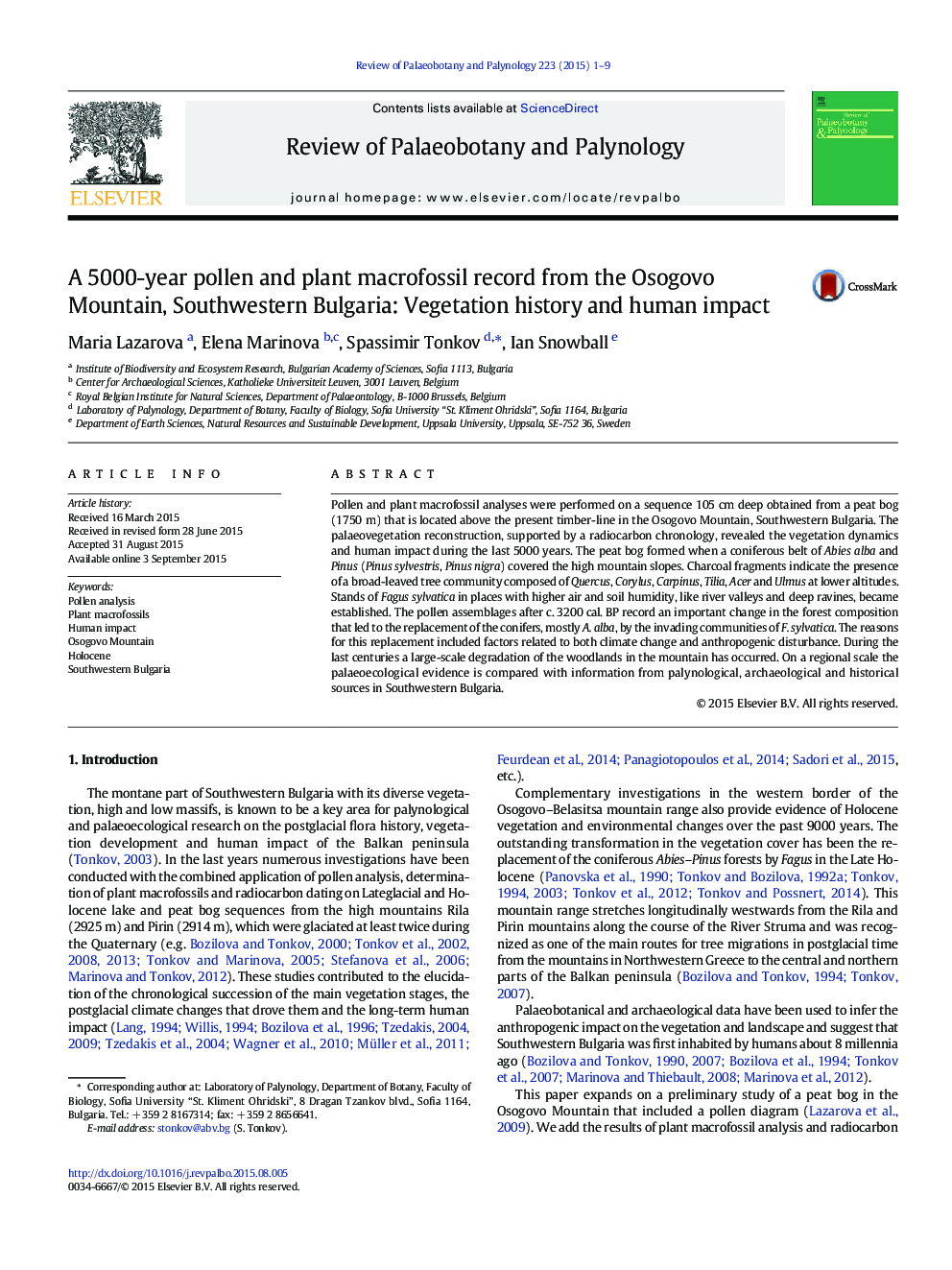| Article ID | Journal | Published Year | Pages | File Type |
|---|---|---|---|---|
| 6448642 | Review of Palaeobotany and Palynology | 2015 | 9 Pages |
Abstract
Pollen and plant macrofossil analyses were performed on a sequence 105Â cm deep obtained from a peat bog (1750Â m) that is located above the present timber-line in the Osogovo Mountain, Southwestern Bulgaria. The palaeovegetation reconstruction, supported by a radiocarbon chronology, revealed the vegetation dynamics and human impact during the last 5000Â years. The peat bog formed when a coniferous belt of Abies alba and Pinus (Pinus sylvestris, Pinus nigra) covered the high mountain slopes. Charcoal fragments indicate the presence of a broad-leaved tree community composed of Quercus, Corylus, Carpinus, Tilia, Acer and Ulmus at lower altitudes. Stands of Fagus sylvatica in places with higher air and soil humidity, like river valleys and deep ravines, became established. The pollen assemblages after c. 3200Â cal. BP record an important change in the forest composition that led to the replacement of the conifers, mostly A. alba, by the invading communities of F. sylvatica. The reasons for this replacement included factors related to both climate change and anthropogenic disturbance. During the last centuries a large-scale degradation of the woodlands in the mountain has occurred. On a regional scale the palaeoecological evidence is compared with information from palynological, archaeological and historical sources in Southwestern Bulgaria.
Related Topics
Physical Sciences and Engineering
Earth and Planetary Sciences
Palaeontology
Authors
Maria Lazarova, Elena Marinova, Spassimir Tonkov, Ian Snowball,
